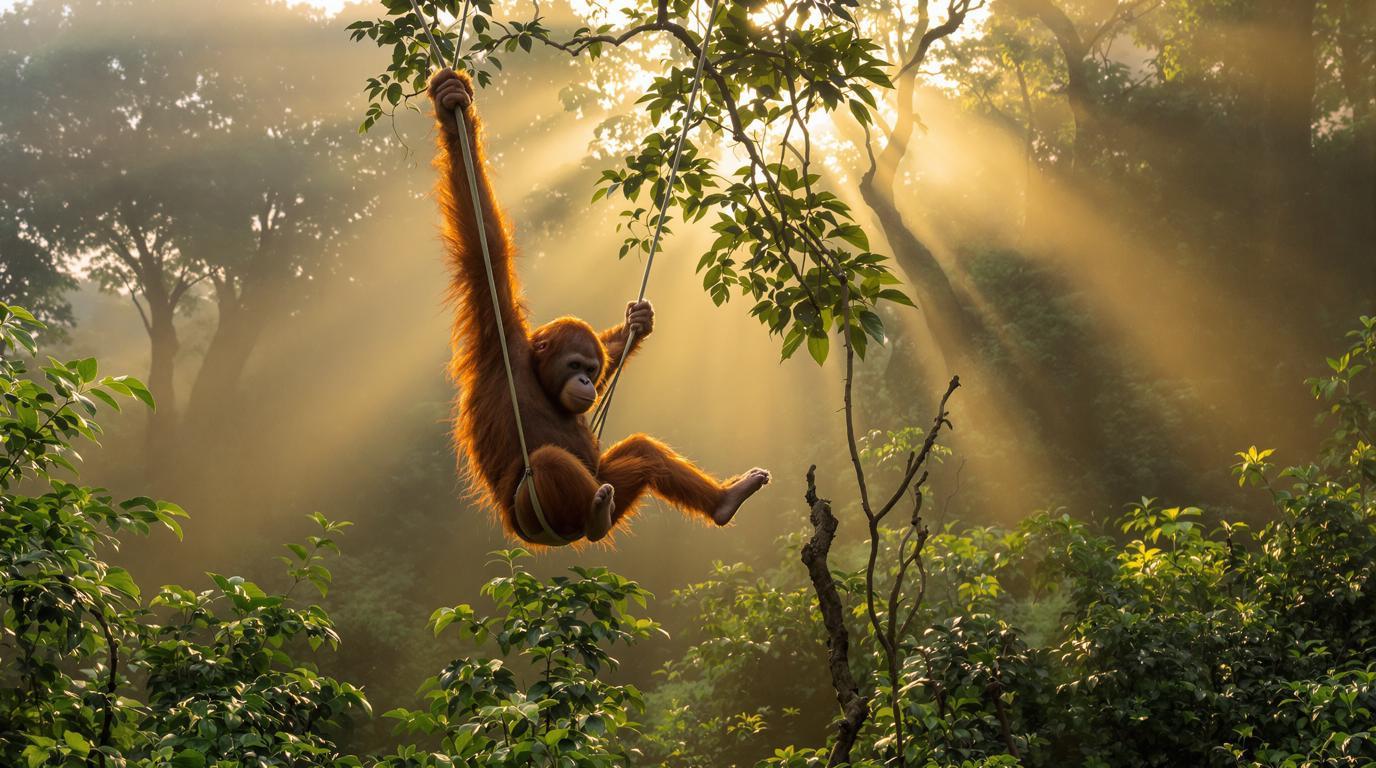When travelers dream of wildlife adventures, African safaris typically dominate the imagination. Yet Asia harbors extraordinary wildlife encounters that rival—and sometimes surpass—its African counterparts. From misty rainforests to remote islands, the continent offers pristine ecosystems where some of Earth’s most fascinating creatures thrive away from tourist crowds.
The orangutan kingdoms of Borneo
Danum Valley in Malaysian Borneo remains one of the planet’s most pristine rainforests. Here, wild orangutans swing through ancient trees while pygmy elephants traverse jungle paths that have existed for millennia. Unlike Africa’s open savannas, Borneo’s wildlife viewing requires patience as creatures emerge from dense foliage.
“The morning mist rising over Danum Valley creates an almost mythical atmosphere,” explains conservationist Dr. Wong Siew Te. “When you see an orangutan building its nest at sunset with the forest canopy glowing golden, you understand why these forests are worth saving.”
Along the Kinabatangan River, another Bornean treasure, wildlife cruises reveal proboscis monkeys with their comically large noses and pygmy elephants bathing in muddy waters—an intimate elephant encounter unlike anywhere else on earth.
India’s secret wildlife corridors
While Ranthambore and Jim Corbett National Parks draw tiger-seeking tourists, Nagarhole-Bandipur corridor in southern India offers something even more extraordinary—melanistic leopards, or “black panthers,” moving like shadows through bamboo thickets.
This hidden wildlife corridor possesses a mystical quality, with local communities considering these rare cats sacred. Few international visitors venture here, leaving the experience authentically wild and uncrowded.
The nocturnal wilderness of India’s night safaris
When darkness falls across sanctuaries like Pench and Kanha, a different dimension of wildlife emerges. On night safaris in India, flying squirrels glide between trees, leopards stalk their prey, and the forest awakens with mysterious sounds unknown to daytime visitors.
“Under starlight, tigers move differently—more confident, more primal,” says veteran guide Raj Sharma. “Watching their eyes reflect your jeep’s spotlight creates a heart-stopping moment few ever experience.”
Cambodia’s floating ecosystems
The wetlands surrounding Tonle Sap Lake harbor some of Asia’s most endangered species. Here, critically endangered Siamese crocodiles slide through mangroves while Irrawaddy dolphins break the water’s surface. Floating villages provide extraordinary access to these ecosystems from traditional wooden boats.
The relationship between local fishing communities and wildlife creates a fascinating cultural dimension missing from many African safaris.
Thailand’s vertical paradise
While Thailand’s beaches draw crowds, Khao Sok National Park’s limestone formations create vertical rainforest ecosystems dating back 160 million years. Visitors can climb 1,237 steps to panoramic viewpoints where gibbons swing through ancient trees and hornbills fill the air with prehistoric calls.
The park’s Cheow Lan Lake, studded with limestone karsts, offers overnight stays in floating bungalows where you’ll wake to mist-draped mountains and macaques swimming between islands.
The Maldives’ whale shark highway
Beyond beaches and overwater bungalows, the Maldives harbors an extraordinary natural phenomenon. One particular 3km stretch near Dhigurah Island serves as a year-round gathering place for whale sharks, Earth’s largest fish.
Local guides call this the “highway to paradise,” where snorkelers can respectfully swim alongside these gentle giants as they filter-feed in crystal waters.
Sri Lanka’s elephant gathering
During the dry season at Minneriya National Park, over 300 elephants congregate around a receding ancient reservoir in what’s called “The Gathering”—Asia’s largest wild elephant assembly and a spectacle rivaling any African wildlife event.
“When hundreds of elephants move together across the grasslands at sunset, their shadows stretching long against the golden light, it feels like witnessing the earth’s ancient rhythms unchanged by time,” describes wildlife photographer Gehan de Silva Wijeyeratne.
These extraordinary Asian wildlife destinations offer something increasingly rare in our world—genuine wilderness experiences where animals roam free in their natural habitats, often just as they have for thousands of years. Perhaps their greatest magic lies in how they remain authentic, unspoiled, and waiting to be discovered by travelers willing to venture beyond the familiar.
